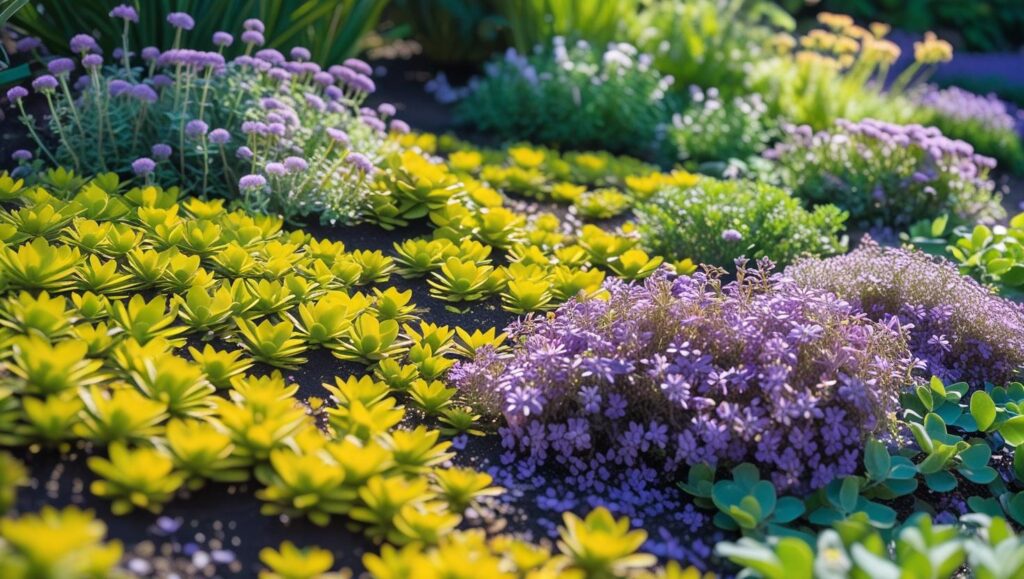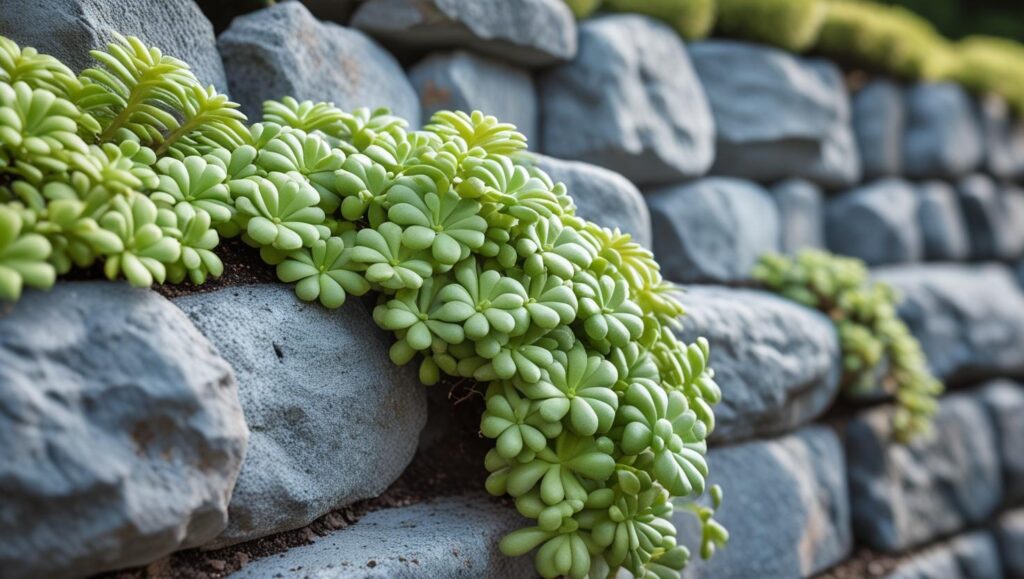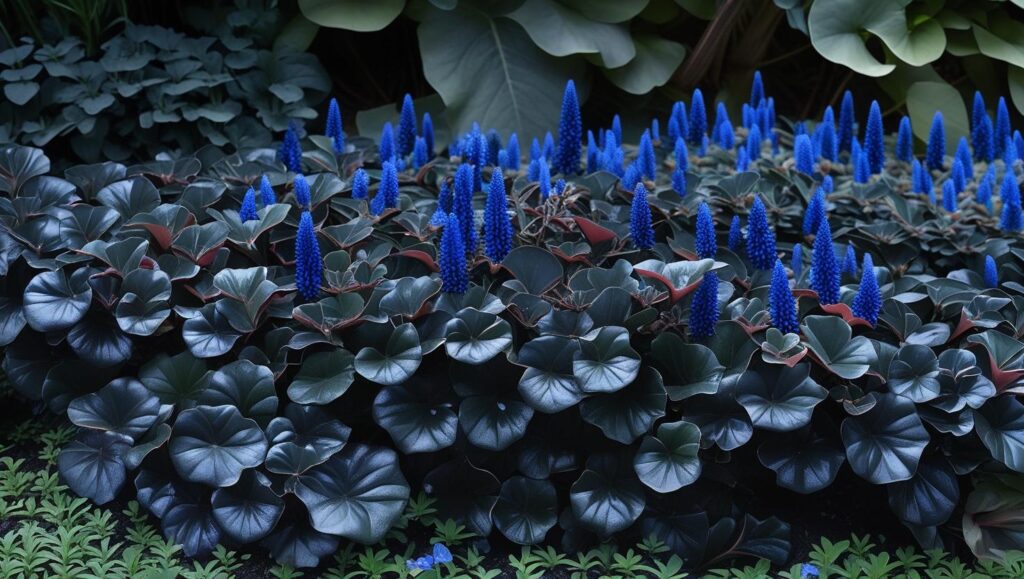
For homeowners and landscapers seeking sustainable and low-maintenance alternatives to traditional turfgrass, a selection of hardy perennials offers a compelling solution. These unique ground cover plants not only endure year after year but also provide a rich tapestry of textures and colors, suppress weeds, and support local ecosystems. Experts say that with the right plant choice for the corresponding climate and soil conditions, these ground covers can significantly reduce garden maintenance while enhancing aesthetic appeal.
According to horticultural experts at various university extension programs, the key to a thriving ground cover is selecting a plant suited to the specific environment. “Choosing the right plant for the right place is the fundamental principle of successful gardening,” states a publication from the North Carolina State University Extension. This involves a careful assessment of sun exposure, soil type, and moisture levels.
Below are eight unique ground cover plants, selected for their resilience, beauty, and ability to thrive in a variety of garden settings.
Creeping Thyme (Thymus serpyllum)
A fragrant and durable choice, Creeping Thyme is an excellent option for sunny, dry areas. This low-growing herb forms a dense mat that can withstand light foot traffic, making it ideal for planting between stepping stones or as a lawn substitute on small slopes.
- Growing Conditions: Full sun is essential for robust growth and flowering. It thrives in well-drained, even rocky or sandy, soil and is exceptionally drought-tolerant once established. According to Garden Design, a horticultural publication, it is hardy in USDA zones 4-9.
- Benefits: In early summer, it produces a profusion of tiny pink or purple flowers that are highly attractive to bees and other pollinators. Its leaves are evergreen in most climates and release a pleasant aroma when disturbed.
‘Angelina’ Sedum (Sedum rupestre ‘Angelina’)
For a splash of vibrant color, ‘Angelina’ Sedum is a standout performer. This succulent ground cover features brilliant golden-yellow, needle-like foliage that provides year-round interest. In cooler autumn temperatures, the foliage often takes on rich orange and reddish hues.
- Growing Conditions: Like most succulents, ‘Angelina’ Sedum demands full sun and sharply drained soil. It is extremely drought-tolerant and performs well in poor, rocky soils where other plants might struggle. It is suitable for USDA zones 5-9.
- Benefits: Its fast-spreading but non-invasive nature makes it perfect for rock gardens, container edges, or cascading over walls. As noted by horticultural database Gardenia.net, it is virtually disease and pest-free, as well as deer and rabbit resistant.

Creeping Phlox (Phlox subulata)
Creeping Phlox is renowned for its spectacular spring floral display. For a few weeks each year, it covers the ground in a dense blanket of flowers in shades of pink, purple, blue, or white.
- Growing Conditions: This plant performs best in full sun and well-drained, average to sandy soil. It is an excellent choice for slopes and rock gardens, where its cascading habit is shown to full effect. Birds and Blooms magazine notes its hardiness in zones 3-9.
- Benefits: Even after its profuse blooming period, its needle-like, semi-evergreen foliage forms an attractive mat that effectively suppresses weeds. It’s also effective for erosion control on hillsides.
Spotted Dead Nettle (Lamium maculatum)
An ideal choice for shady areas, Spotted Dead Nettle brightens dark corners with its variegated foliage. The leaves are typically green with striking silver or white markings, providing visual interest throughout the growing season.
- Growing Conditions: It thrives in part to full shade and prefers moist, well-drained, humus-rich soil. While it can tolerate dry shade once established, its foliage looks best with consistent moisture. The NC State Extension Gardener Plant Toolbox lists its hardiness in USDA zones 3-8.
- Benefits: From mid-spring into summer, it produces small, hooded flowers in shades of pink, purple, or white. It is deer and rabbit resistant, making it a reliable option for woodland gardens.
Bugleweed (Ajuga reptans)
Bugleweed is a vigorous, low-growing perennial prized for its glossy, often colorful foliage, which can range from deep green and bronze to rich burgundy. It spreads quickly via runners to form a dense, weed-suppressing carpet.
- Growing Conditions: While it can tolerate a range of light conditions, it performs best in partial to full shade. It is adaptable to various soil types but thrives in moist, well-drained ground. The University of Florida IFAS Extension notes its adaptability in USDA zones 3-9.
- Benefits: In mid to late spring, it sends up spikes of blue or purple flowers, adding another layer of beauty. Its ability to grow in shady spots where grass struggles makes it a valuable lawn alternative.

Japanese Spurge (Pachysandra terminalis)
For a classic, uniform look in deep shade, Japanese Spurge is an unparalleled choice. This evergreen ground cover forms a lush, dense mat of glossy, dark green leaves that remains attractive throughout the year.
- Growing Conditions: It requires partial to full shade, as its leaves can scorch in direct sun. It prefers rich, moist, well-drained soil. Hardy in USDA zones 4-8.
- Benefits: It is exceptionally low-maintenance once established and is highly effective at preventing soil erosion and weed growth under trees and on shaded slopes. However, sources like the Brandywine Conservancy caution that it can spread aggressively and may be considered invasive in some regions, so it is best used in contained areas.
Periwinkle (Vinca minor)
Also known as Creeping Myrtle, Periwinkle is a tough, reliable, and evergreen ground cover. Its trailing stems root where they touch the ground, allowing it to spread and form a dense covering of glossy, dark green leaves.
- Growing Conditions: It is highly adaptable, growing well in conditions from full sun to deep shade. It is not particular about soil type, as long as it is well-drained.
- Benefits: It produces delicate, lavender-blue flowers in the spring. Its aggressive growth makes it an excellent solution for difficult-to-plant areas and for erosion control on banks. Like Japanese Spurge, its vigor means it can become invasive and may require management to keep it in bounds.
Creeping Mazus (Mazus reptans)
A lesser-known but highly effective ground cover, Creeping Mazus forms a tight, green mat that is studded with small, purplish-blue, orchid-like flowers from late spring into summer. It is an excellent choice for a lawn substitute in smaller areas.
- Growing Conditions: It thrives in full sun to partial shade and prefers consistently moist, well-drained soil. It tolerates moderate foot traffic, making it suitable for paths and between pavers. Epic Gardening notes its hardiness in USDA zones 5-8.
- Benefits: This fast-growing perennial creates a lush, green carpet quickly. Its low-growing habit, typically no more than two inches tall, means it never needs mowing.
Selecting one of these unique ground cover plants can lead to a more sustainable and visually interesting garden. As landscape design trends move away from monoculture lawns, these resilient perennials offer a path to a more diverse, low-effort, and beautiful outdoor space. “By choosing a ground cover that complements your garden’s conditions, you are setting yourself up for long-term success and enjoyment,” a sentiment echoed by many horticultural professionals.
